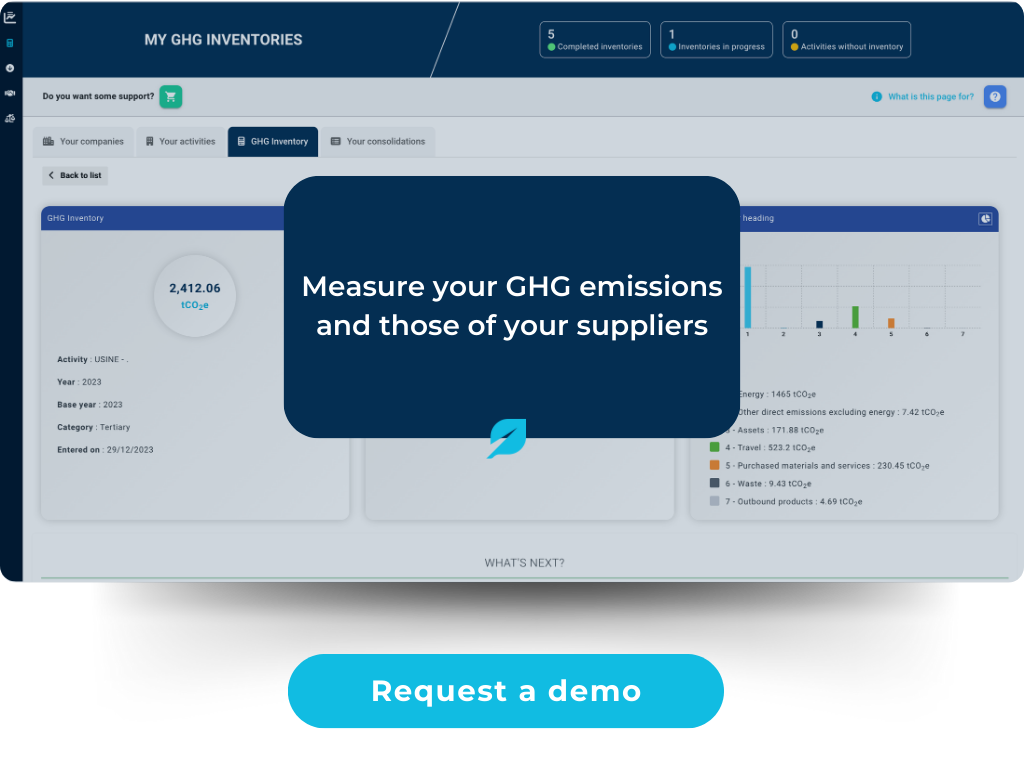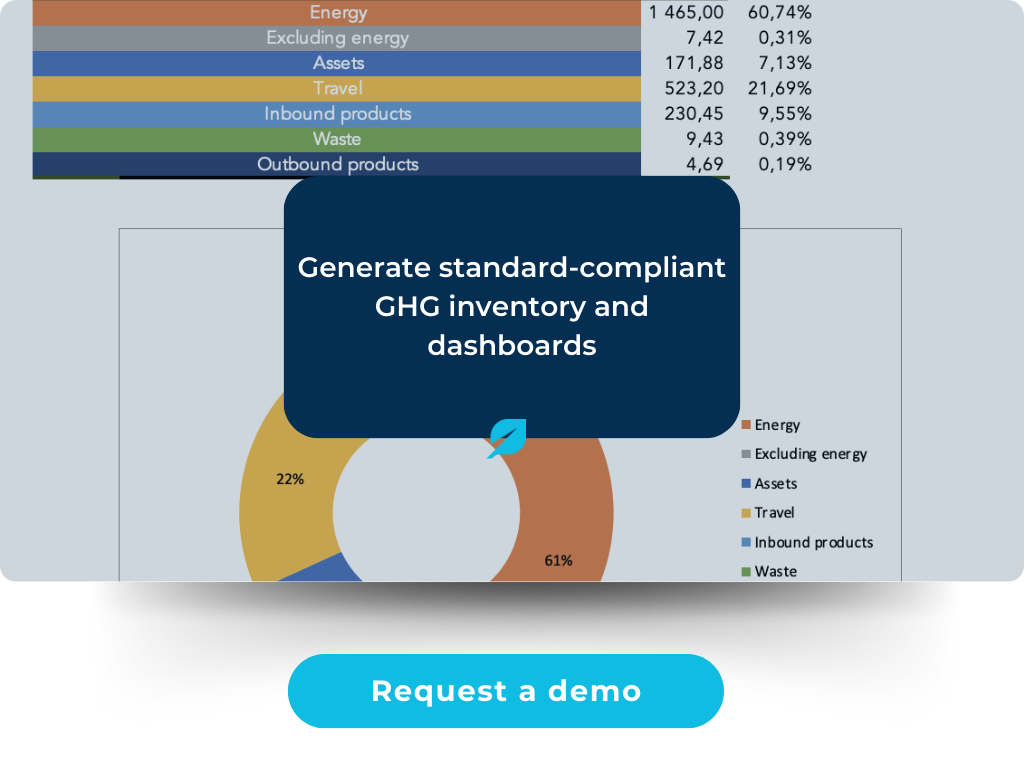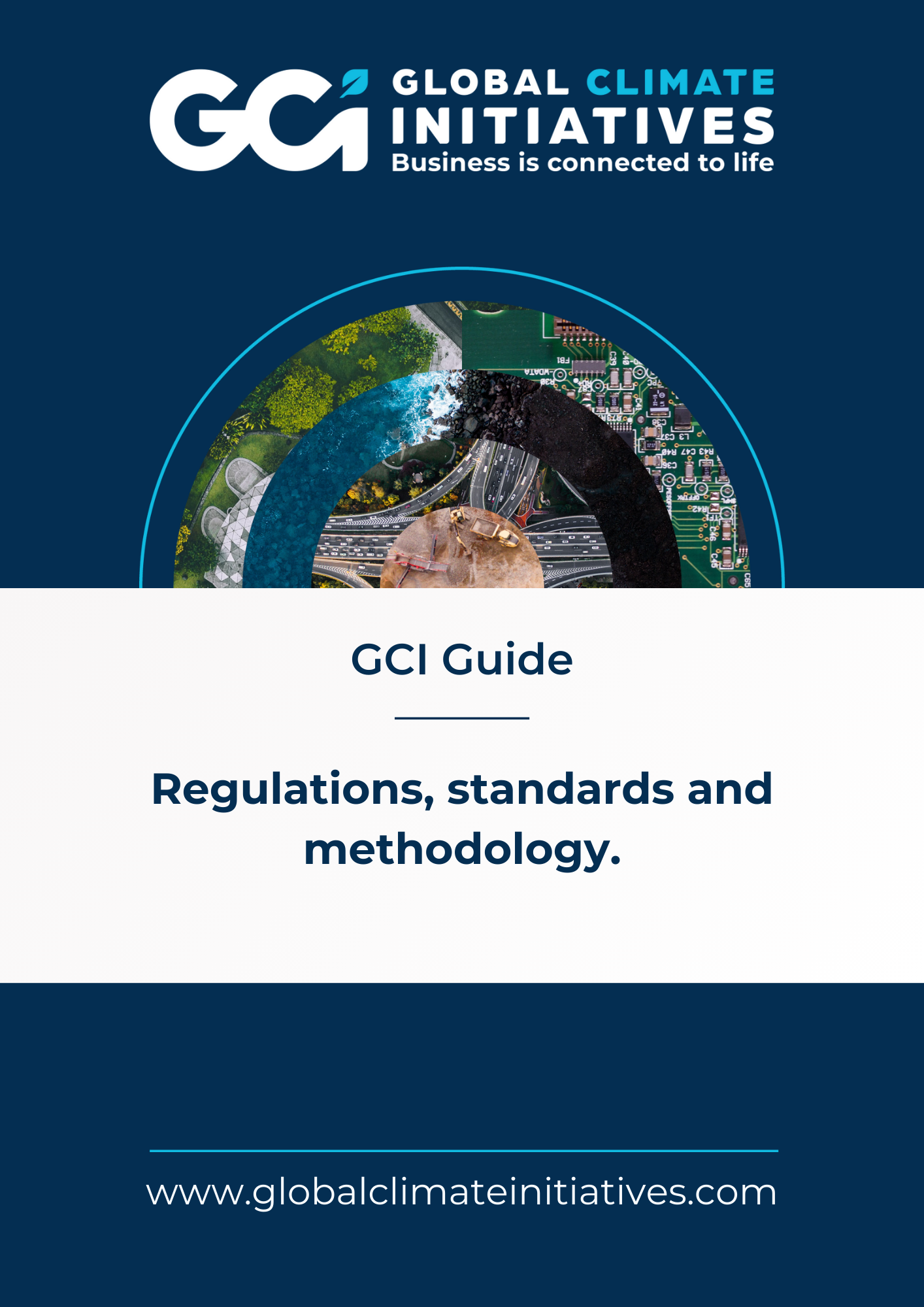Calculate and improve your company's GHG footprint
GCI can be tailored to your specific industry, prioritise the most emitting headings, and define the main reduction avenues for your company.
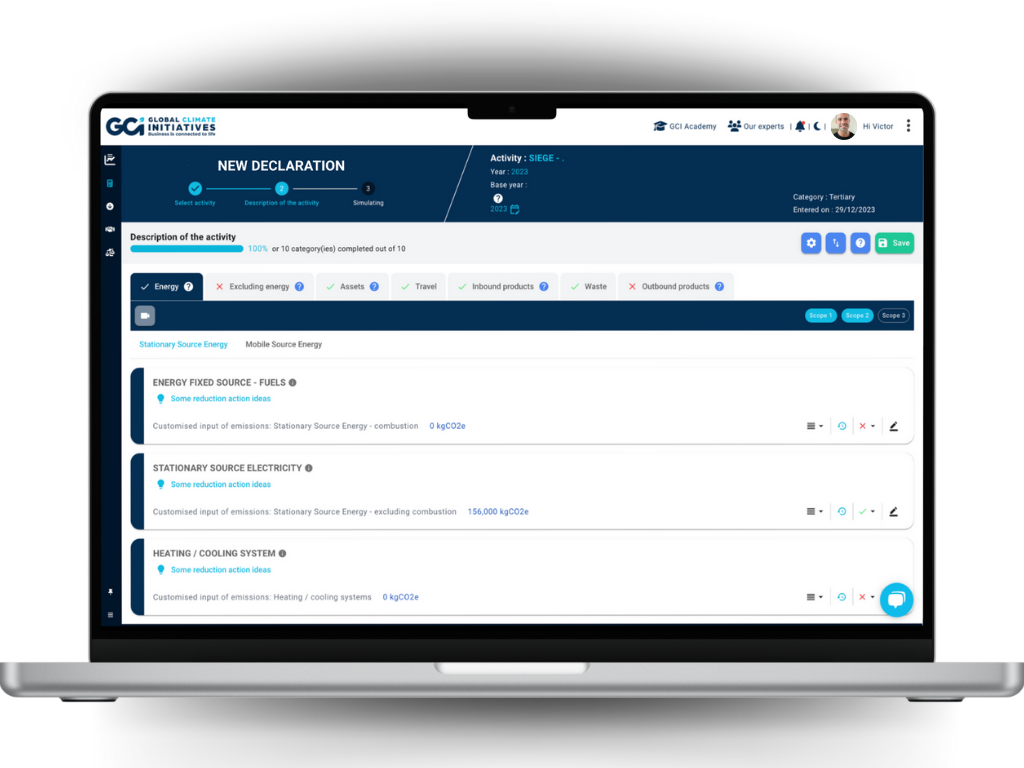

Precise measure of your carbon footprint.

Complete, compliant GHG inventory covering all 3 scopes.

Tailored to your company or organisation's sector.

Identify priority reduction avenues.
Why carry out your GHG inventory with GCI?
GCI, scope 3 specialist.
Our 12 years of experience guarantee you the most comprehensive and educational service, and access to the world's richest database of emission factors, including those of your suppliers.
- 100% online, user-friendly GHG assessment software
- The market's most precise GHG emissions calculator.
- Get started on your own or with a GCI carbon expert to optimize your results.
- An efficient integrated reporting and analysis tool
A methodology tailored to the needs of your company
Scope 1
Sources of direct fixed or mobile emissions from combustion engines industrial processes, leaks of refrigeration gases or biomass.
Scope 2
Sources of indirect emissions from the production of electricity, heat, steam or cold imported for the organization's activities.
Scope 3
Sources of indirect emissions associated with the purchase of goods and services, employee and customer travel, use and end-of-life of products sold, and waste.
Data collection
Let us guide you through our user-friendly interface, and simply produce a GHG report tailored to your organization and sector of activity.
Questionnaires that are specific and tailored to your company's sector.
Online help, tutorials, FAQ and a GCI expert to support you in your enquiries.
Choose and develop your level of analysis.
Multi-user, Multilingual, centralization and supervision of data.
Accurate and compliant calculation
(ISO 14067) of your emission factors and those of your suppliers
Automatic assignment of each emission item calculation to Scope 1, 2 and 3.
Choice of emission factors open to all the reference databases (Base Carbone, Impacts, Ecoinvent, Inies, Beis-Defra, etc) and those of your suppliers.
ONLY at GCI: You can invite your suppliers to calculate the emission factors of the goods and services they offer you, free of charge, in full compliance with ISO 14067.
A full, compliant and forward looking GHG inventory
The calculation methodology and emission factors used comply fully with regulations and recognized standards: ISO 14064, ISO 14067, GHG Protocol.
Analytical report with hierarchy, detail and precision
Reduction avenues for each emission heading
Specific formatting for uploading to the dedicated ADEME site
DEVELOP AND MAINTAIN YOUR
COMPANY WITH THE GCI PLATFORM
Our difference, your strength
The calculator adapts to your organisation

Communication & Multimedia

Distribution, transport & logistics

Industry & Energy

Tech & digital

Consulting & Accounting

Health, environment & agriculture

Tourism, hotels, events & sports

Construction, real estate and public works

Community & public organization
Download our guides
and resources
More information on GHG assessment
We answer your questions!
How do I calculate my company's GHG footprint?
First of all, carrying out a greenhouse gas assessment (BEGES) enables a company to precisely evaluate its carbon footprint and understand the main source of each of its greenhouse gas emissions.
The main difference between the Bilan Carbone and the Bilan GES lies in the definition of the emissions accounting perimeter.
In the Ademe methodology, the GHG balance calculation takes into account the entire life cycle of a company's products or services. This makes it possible to assess the company's overall GHG emissions and identify any sources of savings.
Greenhouse gas (GHG) emissions are assessed on the basis of consumption, using conversion factors specific to each energy source. This makes it possible to standardize measurements and obtain a quantity of emissions expressed in carbon dioxide equivalent (CO2e).
In other words, it involves multiplying your activity data (in kWh, units, liters, €) by an emission factor (average quantity of greenhouse gas emissions for 1 unit of your activity data).
Why carry out my GHG assessment?
Over and above regulatory obligations (in particular since decree no. 2022-982), carrying out a GHG assessment is an essential step for a company, as it enables it to identify and list the greenhouse gas emissions directly or indirectly linked to its activity.
Carrying out your company's first GHG assessment will enable you to make an initial measurement and identify the main emission sources. This will make it all the easier to identify potential areas for reduction and define a low-carbon strategy for your company.
Performing a GHG assessment regularly over time will provide an opportunity to adjust your action plan and ensure that you're achieving your goals for reducing your company's environmental impact.
What data do I need to provide?
To accurately measure greenhouse gas emissions, you need to identify all your company's emission sources. It is therefore necessary to collect activity data:
- Energy consumption (gas, oil, diesel, petrol, electricity, etc. .....)
- Depreciating assets (real estate, fleet of vehicles, computer equipment, furniture, etc.)
- Purchases of goods (raw materials, materials, food, etc.)
- Purchases of services (internet contract, maintenance and installation of equipment, supplies of services, fees, etc....)
- Movement of people: employee commuting, business travel, visitors and customers, etc. .....
- Haulage
- Disposal
- Use and end of life of products sold.
Although it is recommended to be as exhaustive as possible in identifying emission headings, it is possible to start with financial data and to refine the accuracy of the data over time. We recommend that you carry out your inventory in stages, starting with your largest expenditure items first.
How can I reduce my company's carbon footprint?
Reducing the carbon footprint of your company is a multi-step process:
- Carry out an initial assessment of your carbon footprint.
- Identify the most important emission headings, and find ways to reduce them by improving the accuracy of the data used for measurement.
- Involve your suppliers by asking them to calculate the carbon footprint of the goods and services they supply. The measurement will be all the more accurate and you will then be able to implement a responsible purchasing strategy.
- Set up an action plan and a measurement strategy over time to ensure that it is implemented and effective.









